In the last speech of his life
https://www.youtube.com/watch?v=4WZbxYGy3As
A powerful excerpt from the last speech of his life.
In the last speech of his life
https://www.youtube.com/watch?v=4WZbxYGy3As
A powerful excerpt from the last speech of his life.
“A state trooper pointed the gun, but he did not act alone,” King said. “He was murdered by the brutality of every sheriff who practices lawlessness in the name of law. He was murdered by the irresponsibility of every politician, from governors on down, who has fed his constituents the stale bread of hatred and the spoiled meat of racism.”
A quick search on Jimmie Lee Jackson taught me that King revised the eulogy he used for the four girls who died in the bombing of the 16th St Baptist Church in order to speak about Jackson's killing. Obviously a big difference resulting from that revision would be lines like the ones quoted here that denounce the police and the political system. Back to sanitizing, we're more comfortable as a culture in denouncing racist terrorism like the bombing of the church but we struggle to see systemic racism in our government agencies.

While a sanitized image of King as a Southern civil rights crusader has been enshrined in popular memory, his dream of ending American militarism has proved more difficult to accept.
To what degree have we sanitized King to make his image palatable to white America? One way we have, in my mind, is by canonizing his "I Have a Dream" speech with its positive vision while focusing less on the critiques of the white church he levels in "Letter From a Birmingham Jail."
Maybe these myths serve to support this sanitized view, which works in service of "the politics of personal exoneration" that Coates writes about in Between the World and Me. 
King’s speech to Memphis sanitation workers a month before his 1968 assassination, on the economic disparities between blacks and whites, is a better measure of his mature thought. His words could have been written in the aftermath of the 2008 financial crisis: “When there is vast unemployment and underemployment in the black community, they call it a social problem. When there is vast unemployment and underemployment in the white community, they call it a depression.”
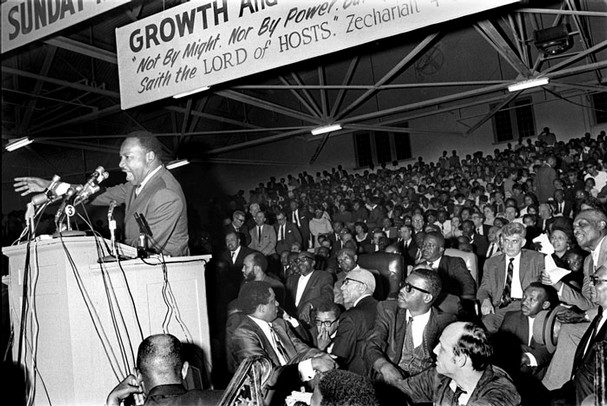 The Huffington Post published a good article in 2014 about why King was in Memphis in the first place. That text paints a clearer, more specific context by describing the mistreatment of black sanitation workers.
The Huffington Post published a good article in 2014 about why King was in Memphis in the first place. That text paints a clearer, more specific context by describing the mistreatment of black sanitation workers.
Ian talked about having students in his college courses annotate the syllabus with suggestions and comments. Joe talked about the power of the crowd, coming together on a single document (apparently, that is going on tonight with the State of the Union speech) as an example of social networking. Jeremy (of Hypothesis) talked about (or wrote about) how teachers can keep track of student work, and the article references how this might fold into student learning portfolios. Terry noticed Karen working all through the hour, and talked about how one might video-capture with reflection the act of annotation as a way to show your learning and thinking. Remi noted how this kind of active annotation might have more value than Twitter chats and other social gathering activities, where too much affirmation and cordiality might soften some deeper learning and sharing of insights.
hung out in a Google Hangou
Those conversations about text can reside in the margins, too. Although I have to admit I can't seem to get a YouTube video to embed in an annotation even though I've seen annotations with vids embedded. Do you know what I might be doing wrong?
We did not have a solid answer, except to note that teaching the art of curation is getting relatively short-thrift in a lot of our classrooms. Ian noted that by not teaching curating, we are missing an opportunity and important skills in the information-rich Digital Age.
I wonder if the mess naturally precedes the beautiful curation effort. In a museum like the one pictured below, you can imagine the back rooms cluttered with treasures and artwork that needs sifting and organizing by someone with any eye toward presentation. Does the mess stimulate the meaningful curation? 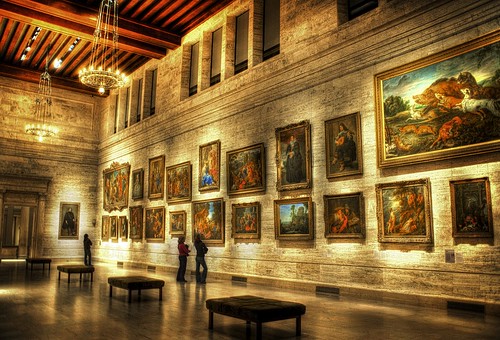
animated GIFs
The margins can really come to life when .gif files appear. 
But the act of annotating an online article together, as a crowd, is always an interesting experience. There are a lot of tools out there to do this, from the comment feature in Google Docs to Genius to Diigo and more. Hypothesis is a nice tool, clean to view, and if the tool is activated, when you come to a page that someone else has annotated, it allows you to view and comment and add to other people’s annotations.
I think it is important how you note that there are a number of tools with which to engage in social annotation and the social experience is something unique. Really, there are two reviews people might do: a tool review and a reflection on the experience.
A portfolio should incorporate some principle of selection. (“Curation,” if we really have to have a no-longer-trendy buzzword.) There should be some metacognitive element, wherein the learner is able to reflect on all their experiences–academic, co-curricular, undergraduate research, athletics, work-related–and demonstrate their accomplishments in a meaningful way.
A key point. When I think about a portfolio, I like the real world analogy of a photographer or architect who has a messy studio from which they pull pieces for real world audiences and would-be employers. They emerge from the studio with a polished, clean, audience-specific presentation. With curation so easily done online, wouldn't we want the metacognitive aspect and the awareness of audience?
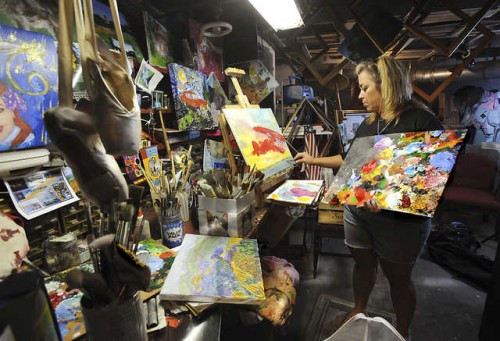
As Quantified Students declare majors and continue to accrue skills, four years of academic work will find a permanent home in the cloud rather than in the trash.
Here, too, the idea that a portfolio is build for and stays with the student is a palatable one. Again, I struggle with the idea of quantifying something that can really give a more complete narrative about someone's learning, passions and successes.
Quantified Students will be able to map current skillsets against the requirements of target careers, evaluate the gap, and then select the educational program or path that gets them to their destination quickly and cost effectively.
It seems like this "Fitbit of higher ed" is not such a repulsive notion, if we accept that a student might have personal goals and want to track progress toward them. The "quantified student" on the other hand flies in the face of what I think workforce wants and the world needs- the truly "qualified" student.
If so, why are American citizens paying so much of that bill? Why ain’t anyone else helping foot the bill? I suppose the answer is that we all are paying and that because Americans benefit the most they should pay the most. It is interesting that while I jack up my barn, I am connected intimately to the fate of the Chinese economy. No one is an isolated jack handler unto himself.
What a turn. I expected one thing when I saw the picture of the farm jack and got another. I was unprepared for this ending but I also appreciate the stream of consciousness reflection as an engaging public brain-dump.
And here is some fun I had with a quote from the book and my new best app friend Legend.
The stacked .gif files is a wild effect that I may have only seen in #ds106 until now. I really think it is a great visual device. 

I teach with two important principles in mind. One is iconoclasty and the other is improvisation. This book is full of lots of improv principles and applications that might really messify your classroom/office for the better. Here are a few of those principles boiled down in this marvelous list from the end of the book
Now I think this might be about lists and the usefulness of them, somehow. In that case, roll with your podcast list idea, my friend, and scratch my unsolicited advice. I'm interested in your thoughts about this book because it is the second time in a few weeks I've heard someone mention it.
Decide which podcasts give the best ROI and why I think so. Describe how I derive better signal over noise as I listen more intentionally over the next year. Get Bryan (and other podcast afficionadi) to articulate how they decide what to listen to.
I wonder about drilling into one or three, really shortening the list since his is extensive but overwhelming to you. It might be more "signal oriented" for others if you describe why one podcast is a favorite and even touch on episode specifics. Just a thought.
Looks like I will be “reading” Bryan Alexander’s blog post, “Fine podcasts for 2016: a mega-list of what I’m listening to“, for quite awhile. Or should I say I will be living his listening life. I am a huge podcast fan as well, but I have a problem–how do I unpack this? How do make signal here out of what I consider to be an overwhelming mass of beautiful noise?
I've been listening to the Note to Self podcast about technology Note to Self podcast and thinking how they would make great media texts to study with high school students or to launch personal learning inquiries with teachers. I wonder what kind of unpacking you envision?
Those with money and power will gain greater control over the decisions that could send a young soldier to war, or allow another economic disaster, or roll back the equal rights and voting rights that generations of Americans have fought, even died, to secure.
Here's one of those with money in search of greater control.
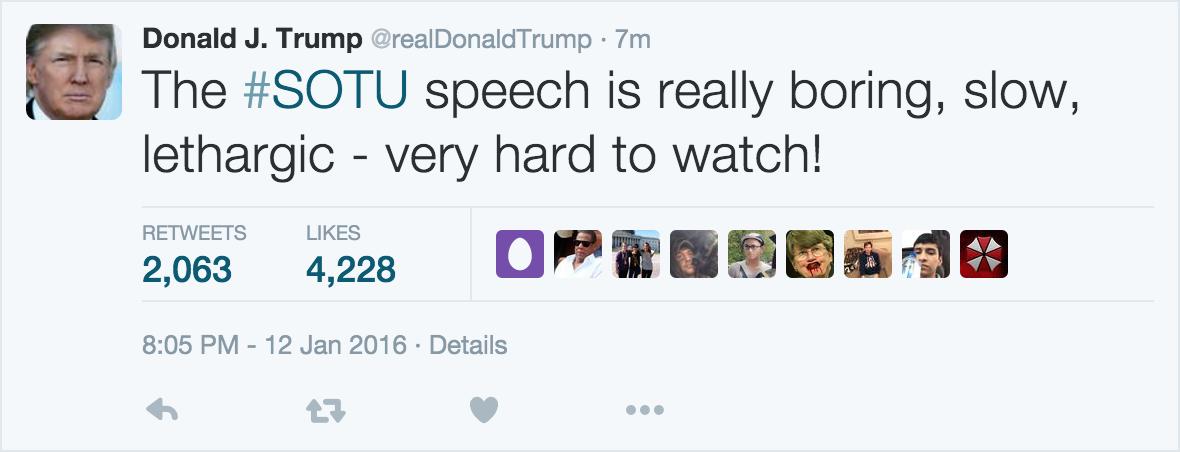
And if we want a better politics, it’s not enough to just change a Congressman or a Senator or even a President; we have to change the system to reflect our better selves.
Significant increases in the number of people who vote seems the easiest way to bring about change and also seems possible given the recent shifts. Stats pulled from "What would it take to turn red states blue?" on Fivethirtyeight.com

Fifty years of isolating Cuba had failed to promote democracy, setting us back in Latin America. That’s why we restored diplomatic relations, opened the door to travel and commerce, and positioned ourselves to improve the lives of the Cuban people. You want to consolidate our leadership and credibility in the hemisphere? Recognize that the Cold War is over. Lift the embargo.
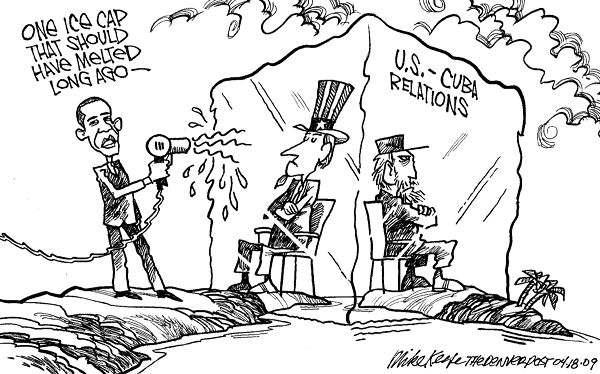
carpet bomb

Gas under two bucks a gallon ain’t bad, either.
You’ll be pretty lonely, because you’ll be debating our military, most of America’s business leaders, the majority of the American people, almost the entire scientific community, and 200 nations around the world who agree it’s a problem and intend to solve it.

how do we reignite that spirit of innovation to meet our biggest challenges?
Maybe with annotation flash mobs. ;)
Anyone claiming that America’s economy is in decline is peddling fiction
Fortune magazine made just his claim last summer. Fortune mag article
It’s how we reformed our health care system, and reinvented our energy sector; how we delivered more care and benefits to our troops and veterans, and how we secured the freedom in every state to marry the person we love.
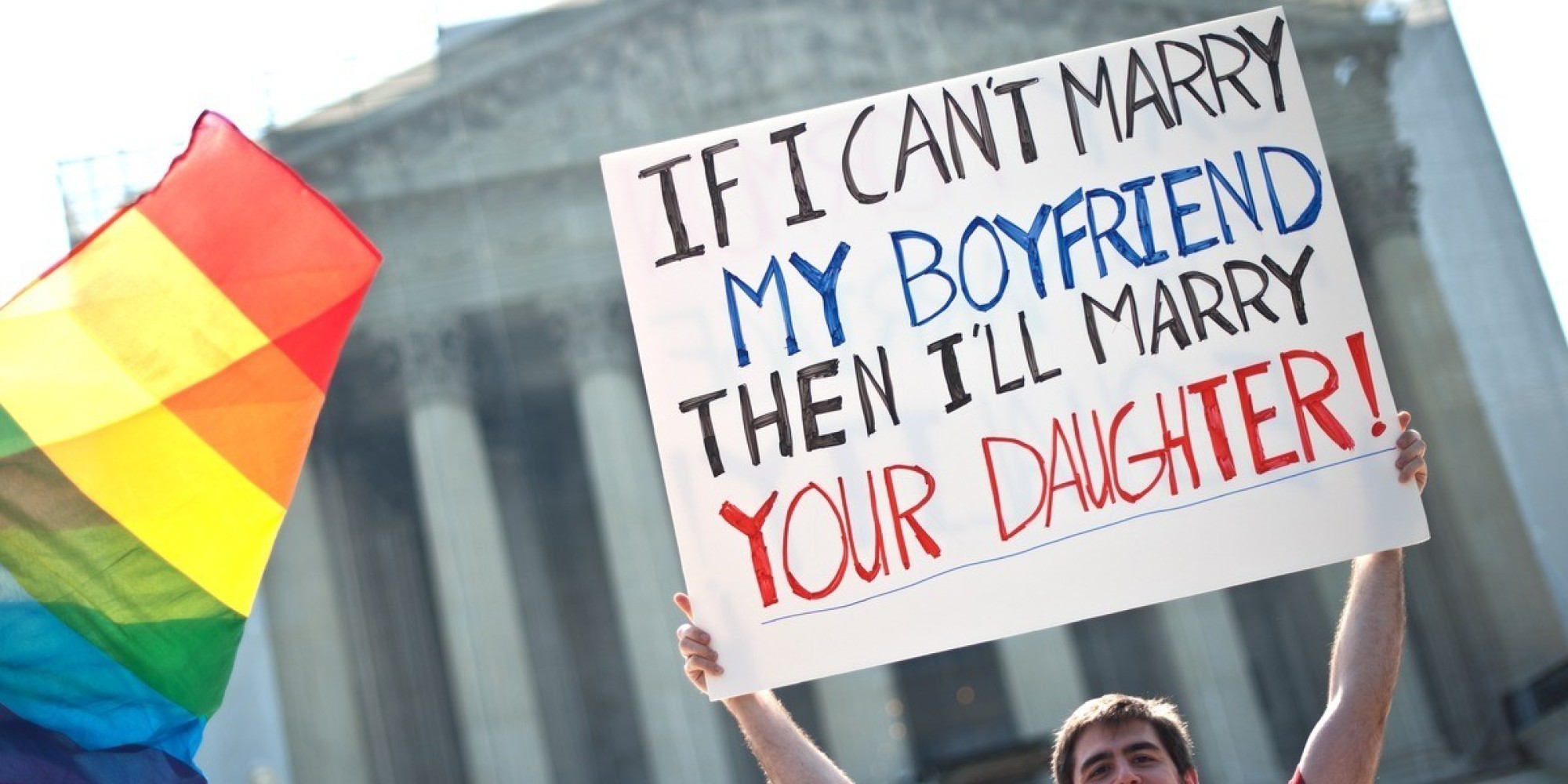
It promises education for girls in the most remote villages, but also connects terrorists plotting an ocean away.
Is this a reference to the claims of far-reaching xMOOCs.
Several years ago, the website Genius (formerly Rap Genius) was established to annotate music lyrics hosted on its platform. It’s proven to be something young people happily do on their own, discussing the word choices and poetic devices used by their favorite musicians in the same way their teachers ask them to discuss great works of literature in class.
These participatory online platforms are used by a small number of youth, who engage with the web to pursue their interests. Most youth, studies show, use the web for friendship-driven practices and aren't familiar with learning platforms. That's an equity issue, especially if youth learn about the potential of the web for self-directed learning at home and in "third spaces."
What explains this difference? The experience of Union City, as well as other districts, like Montgomery County, Md., and Long Beach, Calif., that have beaten the demographic odds, show that there’s no miracle cure for what ails public education. What business gurus label “continuous improvement,” and the rest of us call slow-and-steady, wins the race.
At the 2014 Digital Media and Learning Conference, keynote speaker Louis Gomez made the case for ethnographic research methods and research partnerships with public schools to foster continuous improvement. He used the (PDSA cycle pictured here) as an example.
This is a key political conversation that continues today with people from different points on the political spectrum- who or what is to blame for the blight we see in inner cities.
At various stages in the campaign, some commentators have deemed me either "too black" or "not black enough."
This kind of discourse about the "blackness" of Obama persisted throughout his presidency. In 2015 billionaire media baron Rupert Murdoch commented that Republican presidential candidate Ben Carson would be "a real black president who can properly address the racial divide." The Atlantic magazine published, "A Short History of Whether Barack Obama is Black Enough, Featuring Rupert Murdoch," by David A. Graham.
This was one of the tasks we set forth at the beginning of this campaign - to continue the long march of those who came before us, a march for a more just, more equal, more free, more caring and more prosperous America.
I think the choice of the word "march" is intentional here and the repetition intended to call to mind the Civil Rights Movement (and marches like Dr. King's march from Selma, Alabama to Montgomery, pictured below.)

Then Justice Antonin Scalia deepened an already painful wound when he questioned the abilities of black students to succeed at fast-paced institutions, an idea rooted in the widely discredited “mismatch theory.” Their questions left many black scientists, myself included, reeling from the psychological blow.
This relates to how schools look at students from nondominant cultures: instead of trying to discover how the system repeatedly fails them and acknowledge the need for improvement, schools develop intervention systems that label students and look exhaustively for the students' deficit. The assumption is that the student- found lacking even before we get to know him- is a bad fit for a good system.